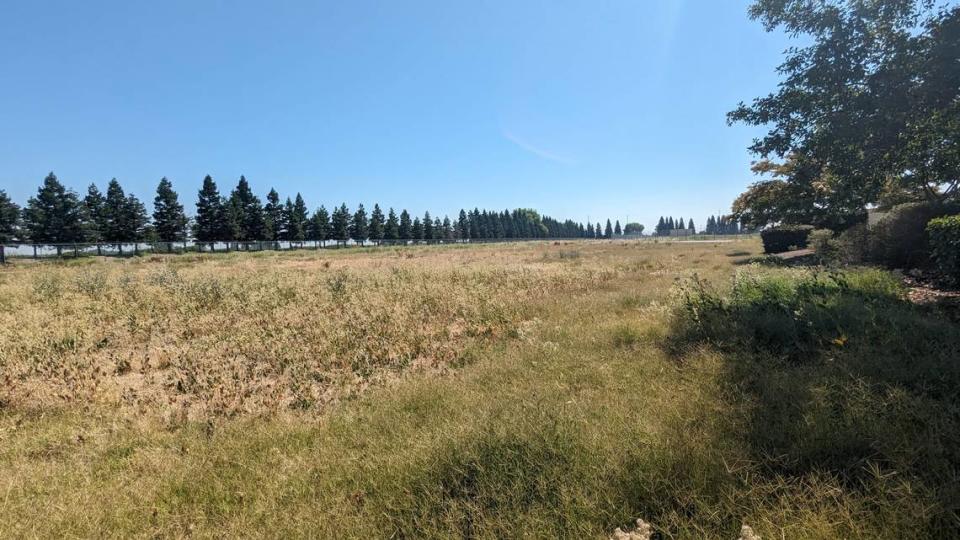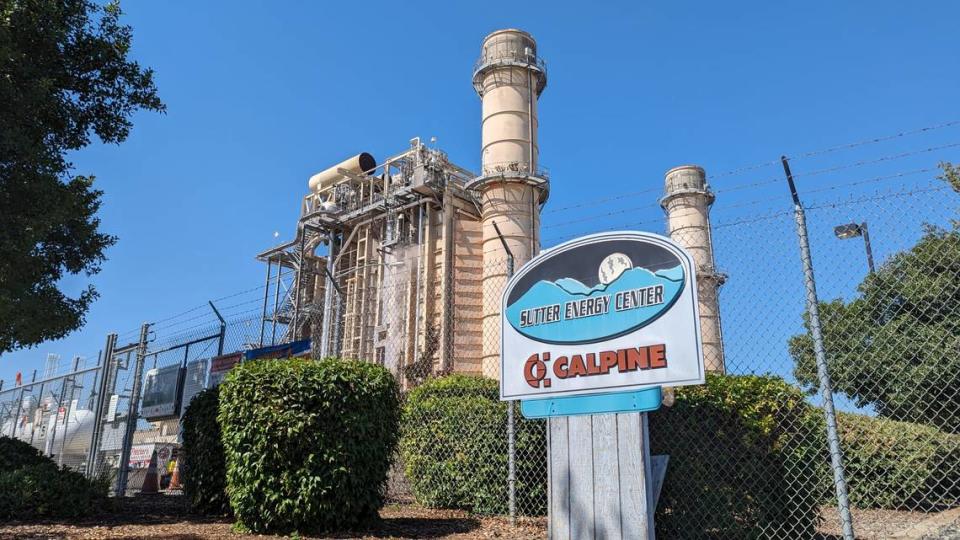Can gas plants be climate friendly? Yuba City carbon capture project wants to be the nation’s first
In the fight against climate change, California is betting on the removal of millions of tons of carbon dioxide from the air by 2045. A significant development in the technology that’s needed might soon take place outside Yuba City.
Calpine, one of the nation’s largest energy producers, hopes to build a $1 billion carbon capture and storage project on a gas-fired power plant about 40 miles north of Sacramento that would be the first facility of its kind in the country.
To prove its feasibility, an 18-month demonstration pilot was unveiled last month at another gas plant in the East Bay Area city of Pittsburg. The project marks an early test of California’s wager on nascent carbon removal technology to cut industrial pollution.
The technology has long been criticized by environmental advocates and experts as unproven. But it’s now drawing strong support from state and federal agencies eager to preserve energy reliability and achieve ambitious climate targets.
“We want this technology to be effective. We want it to work and we want it to achieve the emissions that we need to see,” California Air Resources Board chair Liane Randolph said at the pilot’s unveiling last month.

Randolph called carbon capture and storage a “critical tool” to reduce power sector emissions throughout the country.
Calpine’s $25 million demonstration pilot project begins this month at the Los Medanos Energy Center in Pittsburg. It will test a process that company representatives said can capture 95% of carbon dioxide from the facility’s exhaust, about 10 tons a day.
In the pilot and subsequent commercial project in Yuba City, the company said it will use a liquid solvent developed by Ion Clean Energy of Colorado to bind to carbon in an absorption tower for eventual storage in porous rock formations underground.
That level of carbon capture is “truly unprecedented,” said Ion’s vice president of engineering Andrew Awtry. He said Ion engineers will collect performance data on the pilot for federal regulators before moving forward with commercial operations.
Guests at the pilot’s launch event included Department of Energy officials, state Treasurer Fiona Ma and natural resources secretary Wade Crowfoot.
Calpine CEO Thad Hill told them his company is focused on “being a recognized leader in developing, building, owning and operating modern power plants with full carbon capture on the back end... We think this will really change the world.”

Why capture carbon in Yuba City?
If Calpine’s pilot goes well and the company cinches millions in state and federal grants, it will break ground for the nation’s first commercial CCS project on a gas-fired electricity plant on a grassy field in the rural outskirts of Yuba City.
Surrounded by farmland and lined with trees, Calpine’s Sutter Energy Center was chosen for CCS development because of its proximity to geological storage opportunities and availability of land, company representatives said.
The potential carbon capture facility will include two sets of towers to absorb exhaust form the plant. Inside the towers, Ion’s chemical solvent will bind to carbon dioxide and transport it to a location 10 miles south via underground pipeline.
From there, the carbon will be sent half a mile underground by pipeline into layers of porous rock for permanent storage. A study by the Lawrence Livermore National Laboratory found that the Central Valley’s underground geology is well suited for carbon storage.
Calpine engineers plan to apply lessons learned from the pilot project to Yuba City, from confirming rates of carbon capture to safe operations of the facility and potential for removing criteria pollutants from the plant’s exhaust.
“Being the first facility in California and potentially the nation for putting carbon capture and storage on the back end of an operating natural gas facility will really show everybody that it’s possible,” said Barbara McBride, a director of strategy and development at Calpine.
McBride said she and other company leaders are sensitive to concerns about CCS from environmental justice advocates, but suggested there isn’t an alternative to transitioning away from fossil fuel dependence while preserving reliability.
“Developing California has always been challenging,” McBride said. “But it was really good to hear on Friday that most of our regulators are supportive and see the need. We need to combat climate change.”
Despite strong state support, carbon capture and storage technology continues to draw criticism from environmental advocates who say it remains unproven and prolongs our dependence on fossil fuels. California’s legislative analyst also expressed concerns about relying on it to cut emissions across California’s economy to 48% below 1990 levels by 2030.
“It’s really kind of a numbers game that’s being used to make promises of technology that hasn’t been proven to actually work in order to continue to perpetuate old, dirty practices,” said Catherine Garoupa, executive director of the Central Valley Air Quality Coalition.
Even if the technology works, Garoupa said, leftover nitrogen and particulate emissions threaten human health and the risks to storing large amounts of carbon dioxide underground are unknown. Activists have also pointed to strong ties between regulators and the ascending carbon removal industry.
The Los Angeles Times reported last year that the research from the Lawrence Livermore National Laboratory — which was cited by the Air Resources Board in its support for CCS — was funded in part by a group tied to a Michigan energy company that stands to benefit from California’s incentives.
Instead of these technologies, Garoupa said California should focus on renewable energy and battery storage, decarbonizing buildings, cutting emissions from the transportation sector and restoring ecosystems that naturally remove carbon — or finding ways to use less energy.
“We’re seeing CARB put the pedal to the metal in enabling this type of technology despite the fact that even in their own report, it says it should be a technology of last resort,” Garoupa said.

Fuzzy future for California’s gas plants
Calpine and the project’s supporters hope the Pittsburg pilot kicks off a surge of CCS projects, but just how many gas-fired power plants will be retrofitted with carbon removal — or kept running in the first place — is unclear.
California agencies are taking steps to decarbonize the power sector and heavy industry. Yet just last year, California officials extended the life of four gas plants scheduled for retirement.
With heat waves becoming more extreme, the electric grid comes under more strain during evening hours of peak demand when solar and wind sources fall off.
The Department of Water Resources argued that the “strategic reliability reserve” of gas plants created by a bill passed by lawmakers at Gov. Gavin Newsom’s urging last summer helped keep the lights on during a punishing September 2022 heat wave.
Yet a recent report conducted by the consulting firm Grid Strategies with the California Environmental Justice Alliance found that those gas facilities suffered from major performance issues in the heat. Some 10% to 15% of the state’s total 40 gigawatts of gas power becoming unavailable during the high-demand evening hours, according to the report.
And the reserve has angered environmental justice advocates who want to see gas plants in the San Joaquin Valley and on the Central Coast retired. Neighborhoods near the facilities are often low-income communities of color already suffering from disproportionately high asthma rates.
What does the future hold for gas-fired power plants in California, with or without carbon capture and storage?
“The real answer is we have no idea,” said Michael Wara, director of Stanford University’s climate and energy policy program. “We need to have a bunch of irons in the fire and CCS at a gas plant is one of those items. But it’s not yet proven.”

